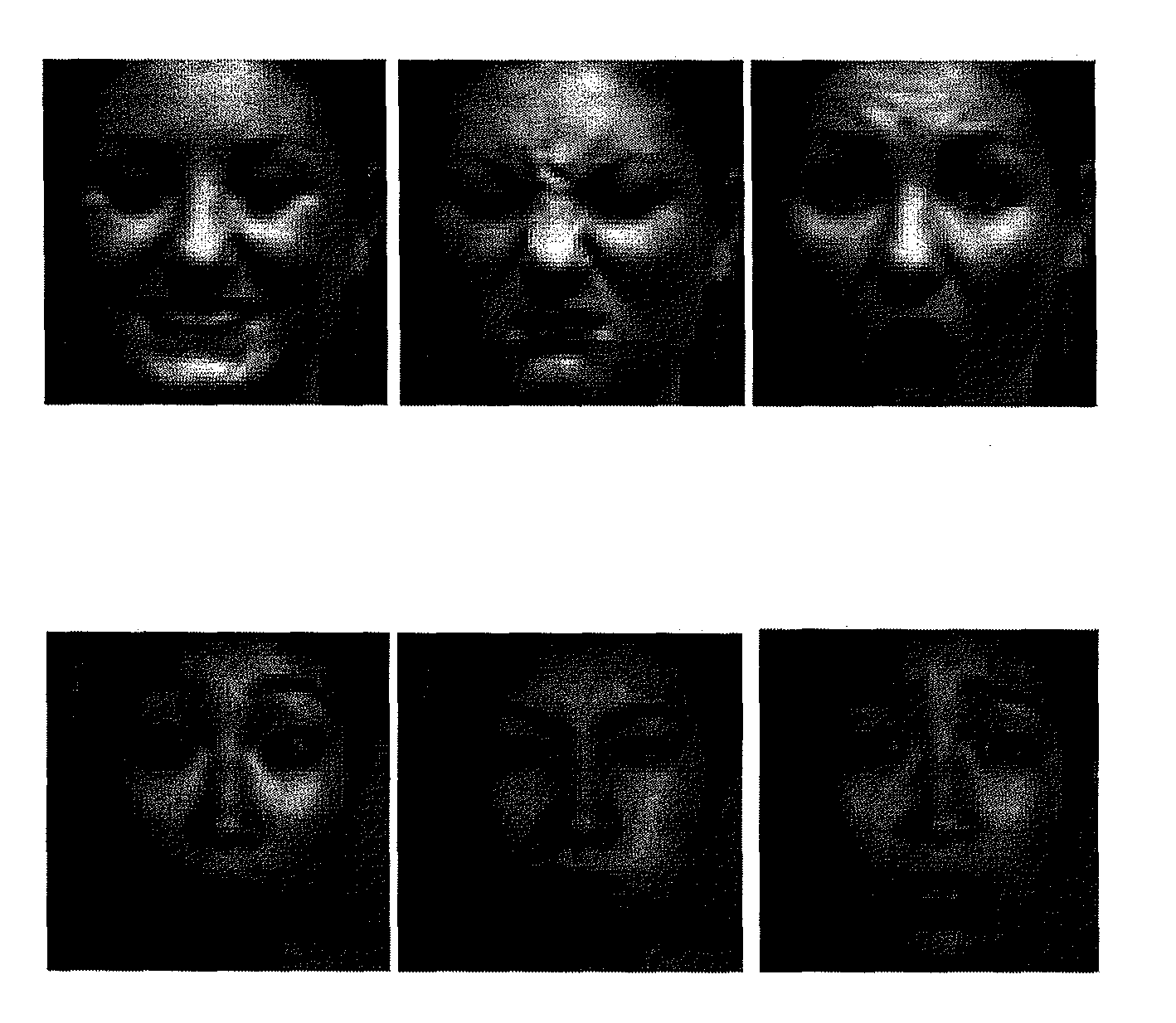Ultra-low dimensional representation for face recognition under varying expressions
a face recognition and low dimensional space technology, applied in the field of expression-variant face recognition, can solve the problems of difficult visual interpretation of gross innovation image, difficult operation in such a low dimensional space, and difficulty in obtaining/recognizing facial features, etc., to achieve the effect of drastically reducing storage space and operational dimensionality
- Summary
- Abstract
- Description
- Claims
- Application Information
AI Technical Summary
Benefits of technology
Problems solved by technology
Method used
Image
Examples
Embodiment Construction
[0034]Embodiments of the present invention now will be described more fully hereinafter with reference to the accompanying drawings, in which some, but not all embodiments of the inventions are shown. Indeed, embodiments of the invention may be embodied in many different forms and should not be construed as limited to the embodiments set forth herein; rather, these embodiments are provided so that this disclosure will satisfy applicable legal requirements. Like numbers refer to like elements throughout.
Overview:
[0035]In general, embodiments of the present invention provide a new technique for face feature extraction and classification, based on the Compressive Sensing (CS) theory, wherein a focus of the technique is on addressing expression variation in face recognition (FR). Expression-invariant FR is a challenging task owing to the complex and varied nature of facial expressions. Some sample face images are shown in FIGS. 1A-1C to illustrate the complexity of the problem. The meth...
PUM
 Login to View More
Login to View More Abstract
Description
Claims
Application Information
 Login to View More
Login to View More - R&D
- Intellectual Property
- Life Sciences
- Materials
- Tech Scout
- Unparalleled Data Quality
- Higher Quality Content
- 60% Fewer Hallucinations
Browse by: Latest US Patents, China's latest patents, Technical Efficacy Thesaurus, Application Domain, Technology Topic, Popular Technical Reports.
© 2025 PatSnap. All rights reserved.Legal|Privacy policy|Modern Slavery Act Transparency Statement|Sitemap|About US| Contact US: help@patsnap.com



